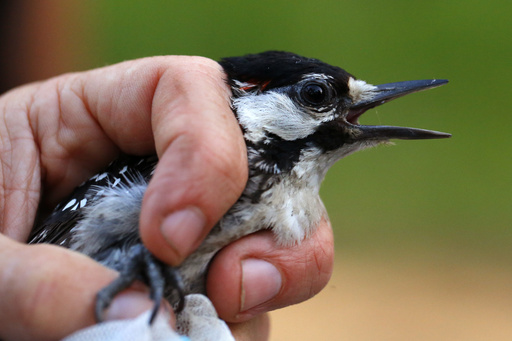
WASHINGTON — The red-cockaded woodpecker, a symbol of southeastern woodlands, has seen its population increase sufficiently to be reclassified from an endangered species to a threatened one, as announced by the U.S. Fish and Wildlife Service on Thursday.
“This downlisting of the red-cockaded woodpecker signifies an important achievement in our nation’s dedicated efforts to protect biodiversity,” stated Interior Secretary Deb Haaland in a press release.
Historically, this species faced severe decline during the 1970s, with officials reporting a mere 1,470 clusters—essentially, groups of nests. In a remarkable turnaround, today’s estimates suggest that around 7,800 clusters exist.
Will Harlan from the Center for Biological Diversity described the species as extraordinary, noting its distinct communal nesting habit. “All nests typically gather in the same tree, and the birds tend to remain together as a cohesive family group,” he explained.
Specializing in specific habitats, red-cockaded woodpeckers exclusively nest in mature long-leaf pine forests, constructing their nests in tree cavities that are partially hollowed out by fungus.
Once, long-leaf pine forests stretched across much of the Atlantic and Gulf coastal areas, from New Jersey to Texas. However, due to extensive logging and development, only about 3% of this habitat remains today, according to Harlan.
The red-cockaded woodpecker was among the first species to be designated as “endangered” in 1970 and received full protection under the Endangered Species Act of 1973.
Since that time, both public and private efforts in habitat restoration and protection have contributed to the species’ partial recovery. Additionally, organized strategies to relocate birds from stable populations to help reestablish them in new forests have also played a role, remarked Georgetown ecologist Emily Williams.
“This development is thrilling as it demonstrates a conservation success on many levels,” she said. “Nevertheless, we must remain vigilant to ensure the species continues to thrive.”
While it will still be illegal to “take” these woodpeckers—meaning to harass, hunt, or harm them or their habitats in most cases—the new status does open the door for potential exceptions to those protections.
“The species still has a considerable journey ahead for full recovery,” cautioned Ramona McGee, senior attorney and wildlife program leader at the Southern Environmental Law Center. “Removing protections for endangered species at this stage could jeopardize the progress that has been made.”
